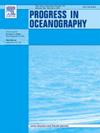Phytoplankton phenology describes yearly algal growth cycles and characterises the timing, duration, and magnitude of bloom occurrences. This study used satellite chlorophyll-a data from 1998 to 2020 and the Hierarchical Agglomerative Clustering method to define phenoregions based on phytoplankton phenology spatial patterns over the British Columbia and Southeast Alaska coastal oceans. The defined phenoregions were used to simplify the spatial complexity of the heterogenous study region and thus better describe phytoplankton seasonality across the target area. The cluster analysis allowed the delineation of four coherent regions: two coastal regions and northern and southern shelf/offshore regions. Results showed that each phenoregion had distinguishable phytoplankton phenological characteristics, likely due to different physical forcings acting in these areas. Moreover, the interannual variability of the spring bloom initiation was evaluated considering interactions between sea surface temperature (SST) anomalies and the El Niño Southern Oscillation Index (ENSO). Early spring blooms were associated with positive SST anomalies and El Niño conditions; conversely, average or late spring blooms occurred in years with negative SST anomalies and La Niña conditions, with the strongest relationship occurring in the southern shelf/offshore phenoregion. This study provided new insights into the regionalisation of the British Columbia and Southeast Alaska coastal oceans based on phytoplankton phenology patterns. Given the critical role of phytoplankton as the base of the marine food web, such phenoregions have implications for regional zooplankton biomass and fish production. The link between phytoplankton phenology and climate drivers points to the importance of environmental change in phytoplankton bloom dynamics. Further research into the connection between phytoplankton bloom indices and zooplankton community structure and production would be an important step towards using these indices for ecosystem monitoring and fisheries management.


